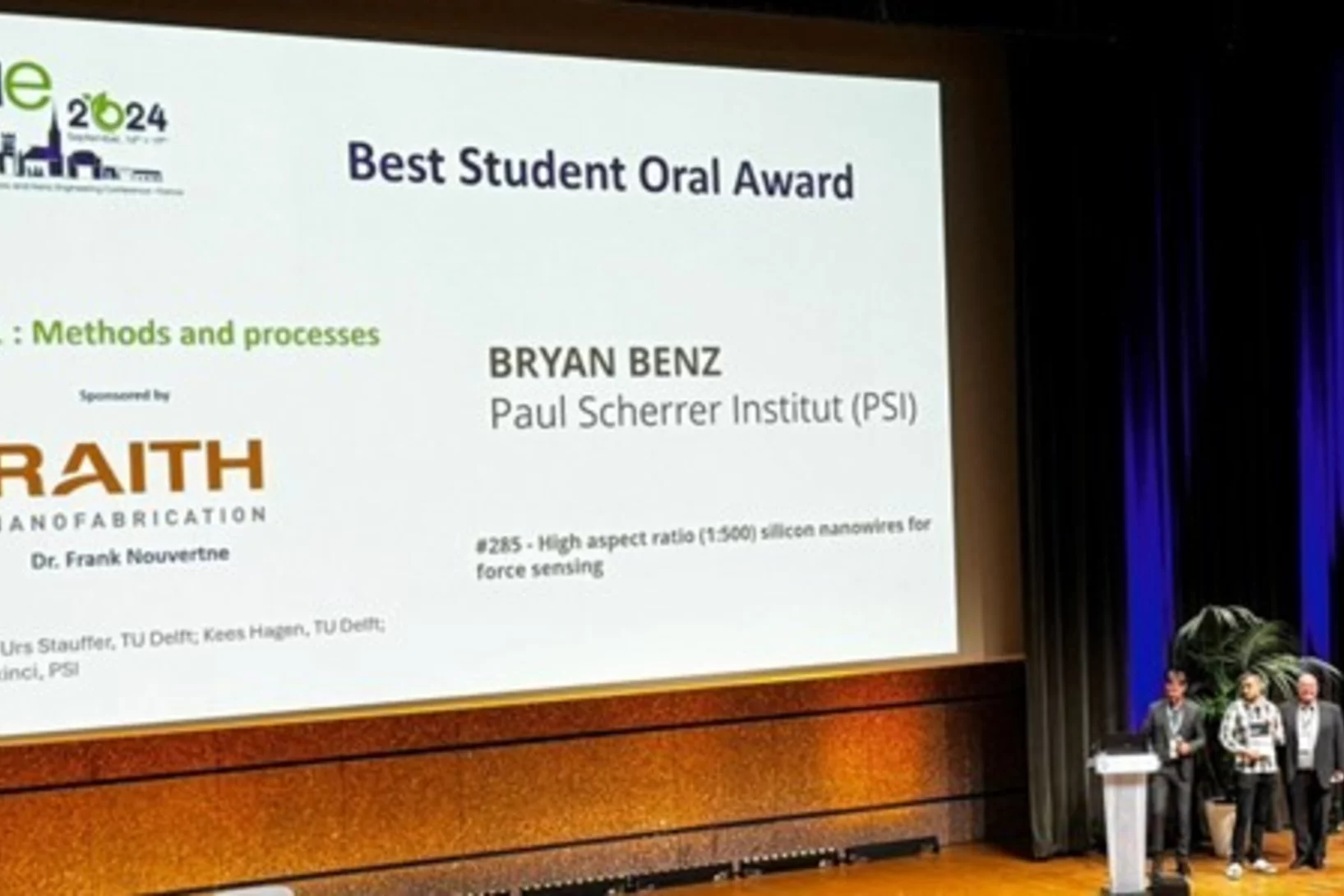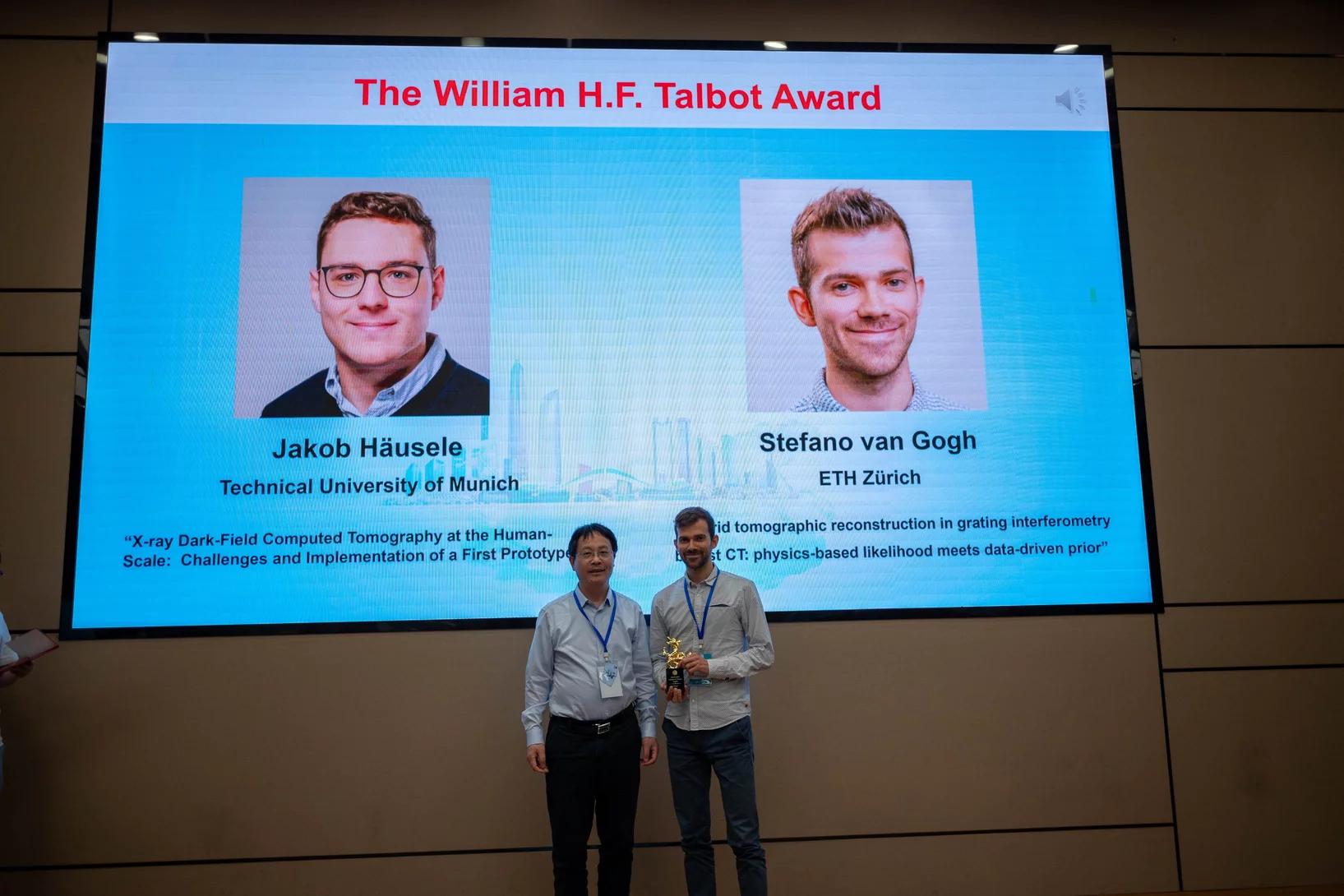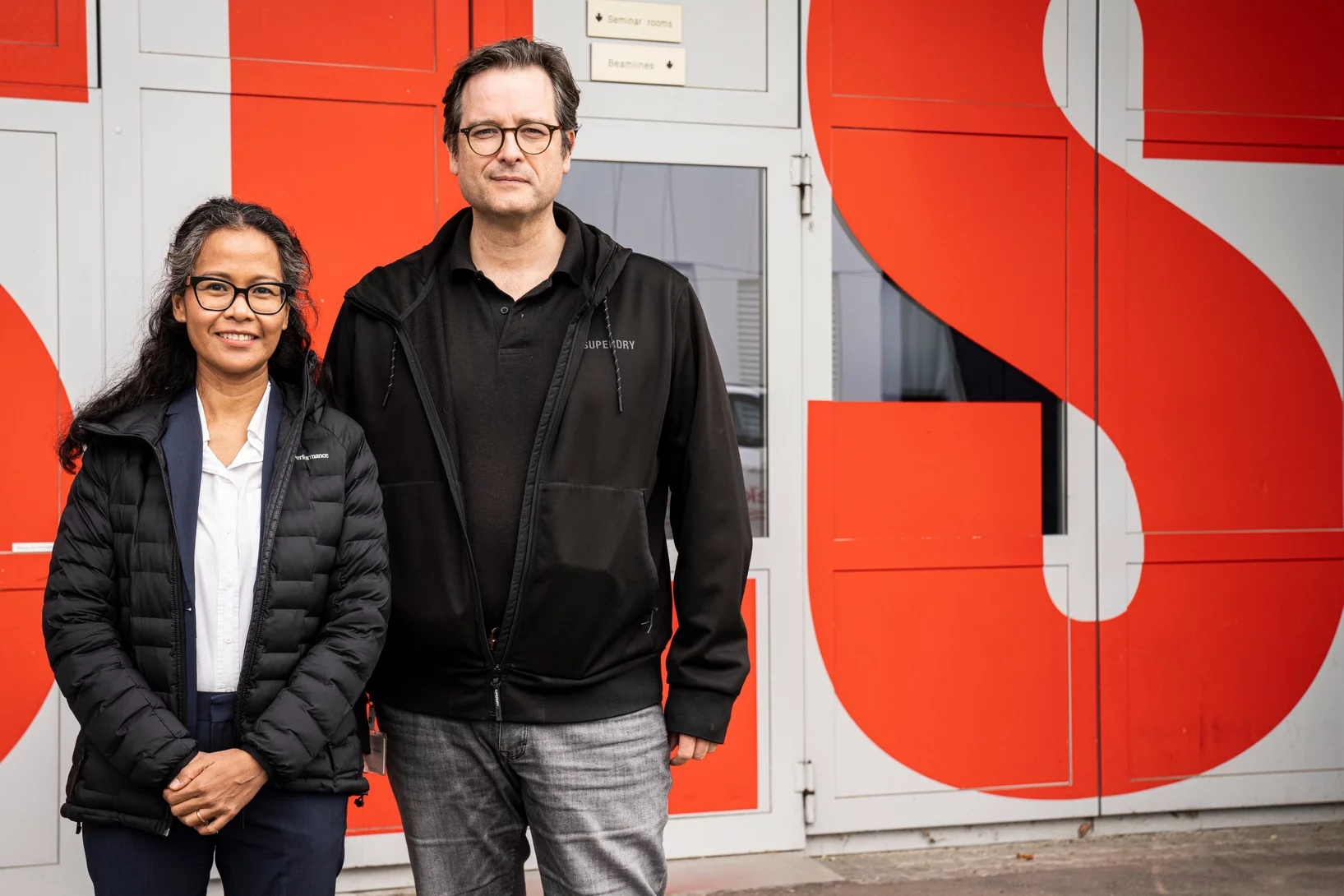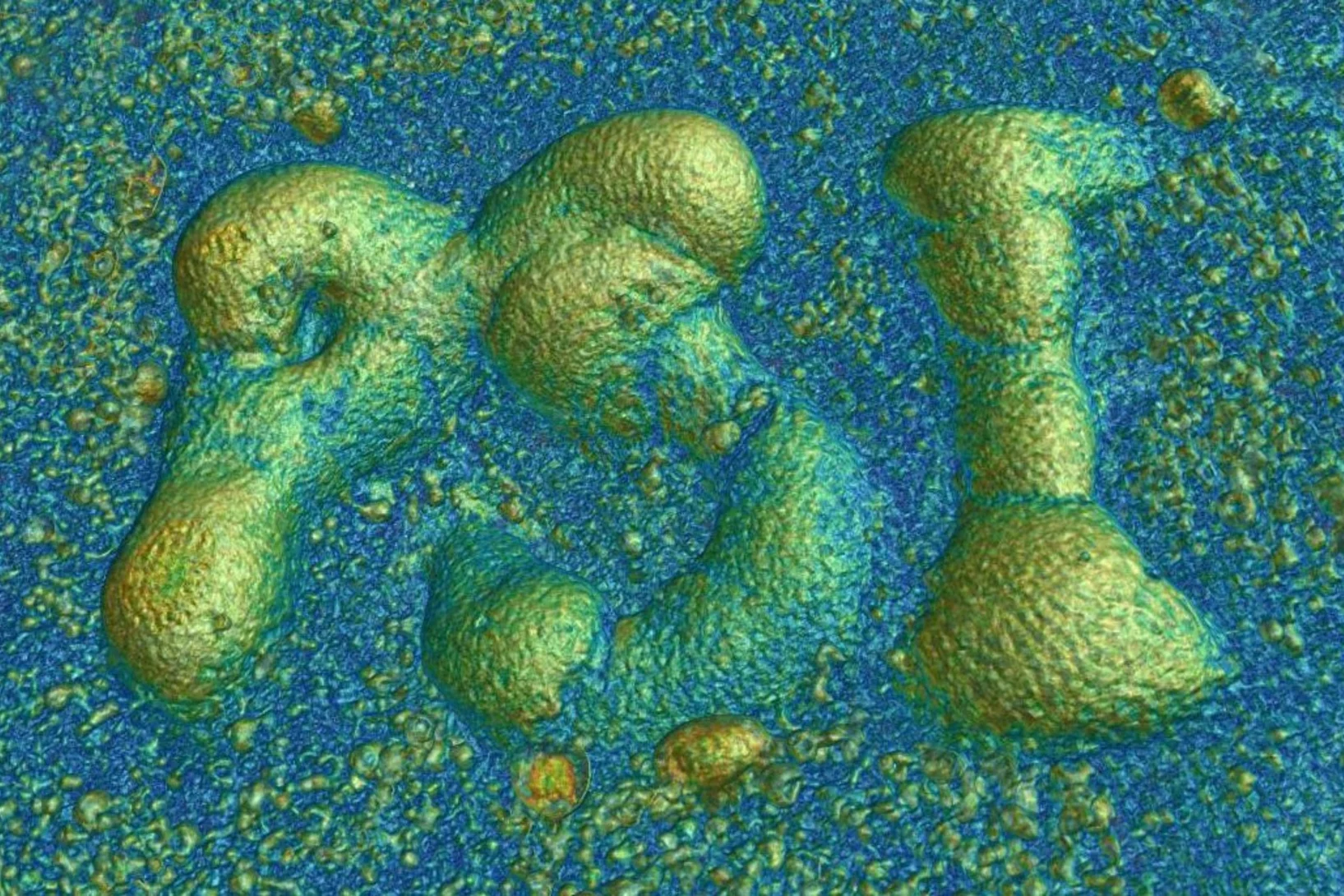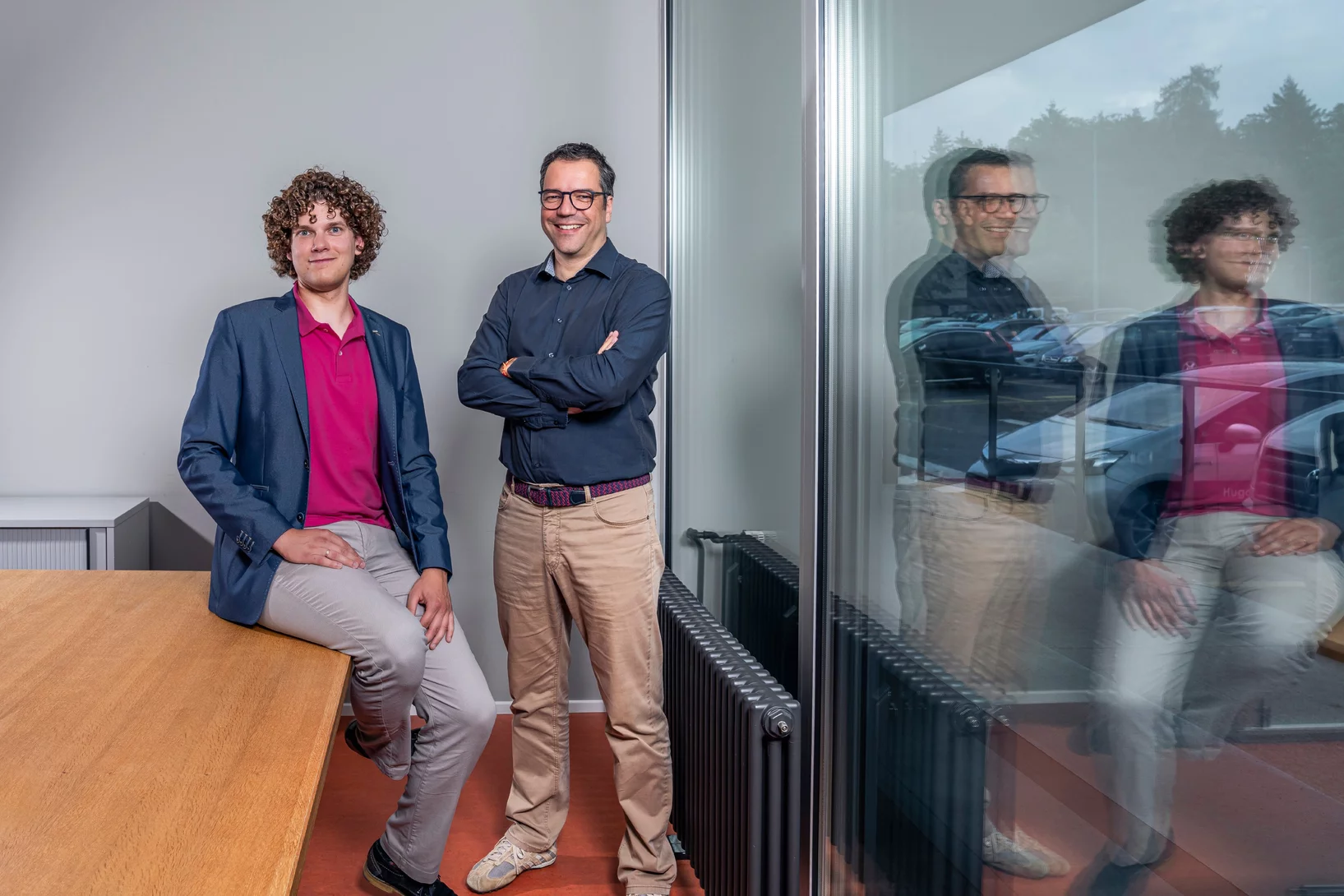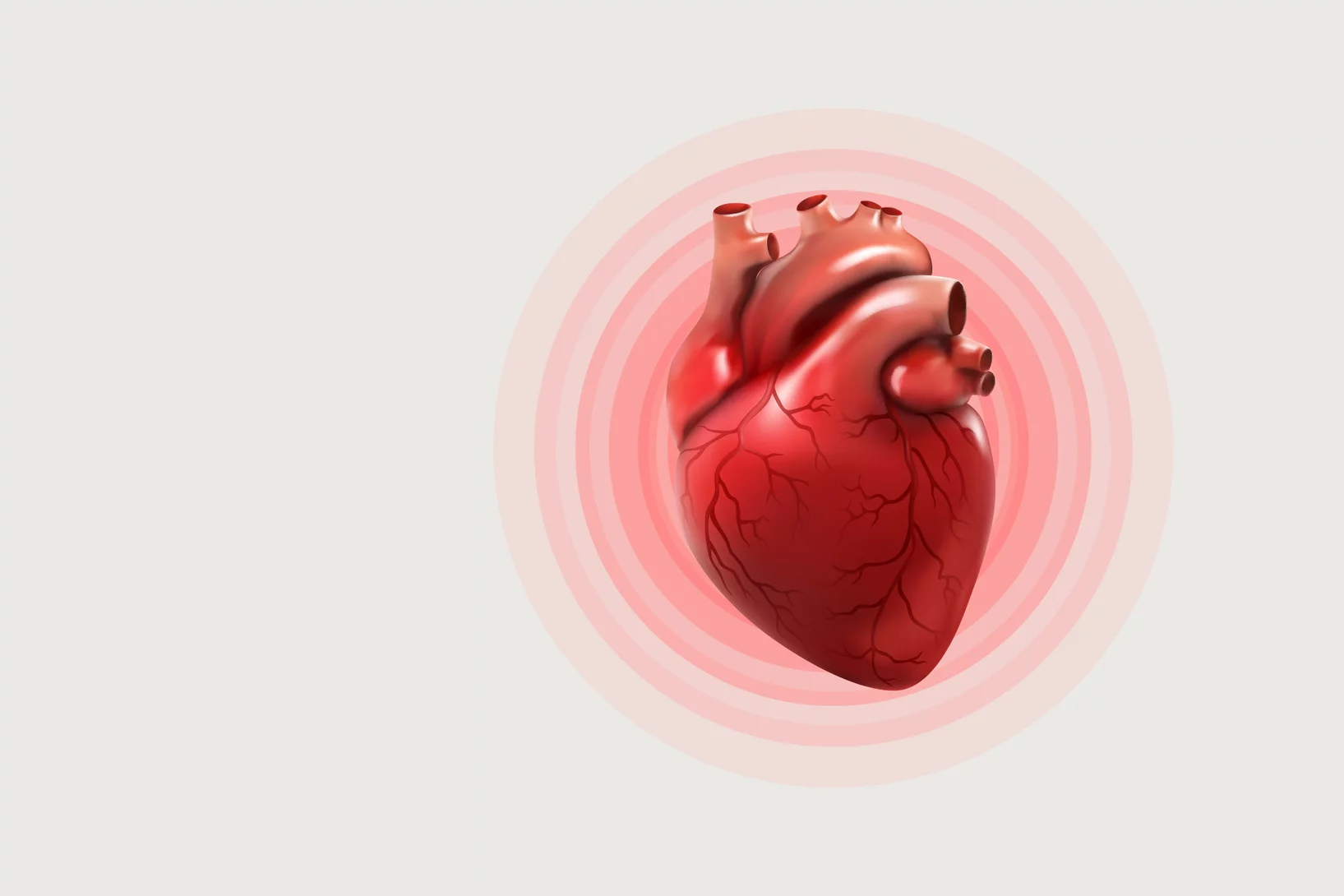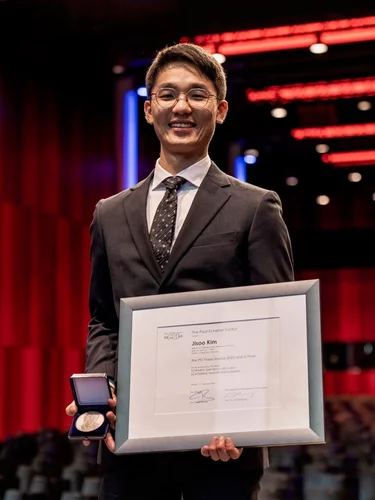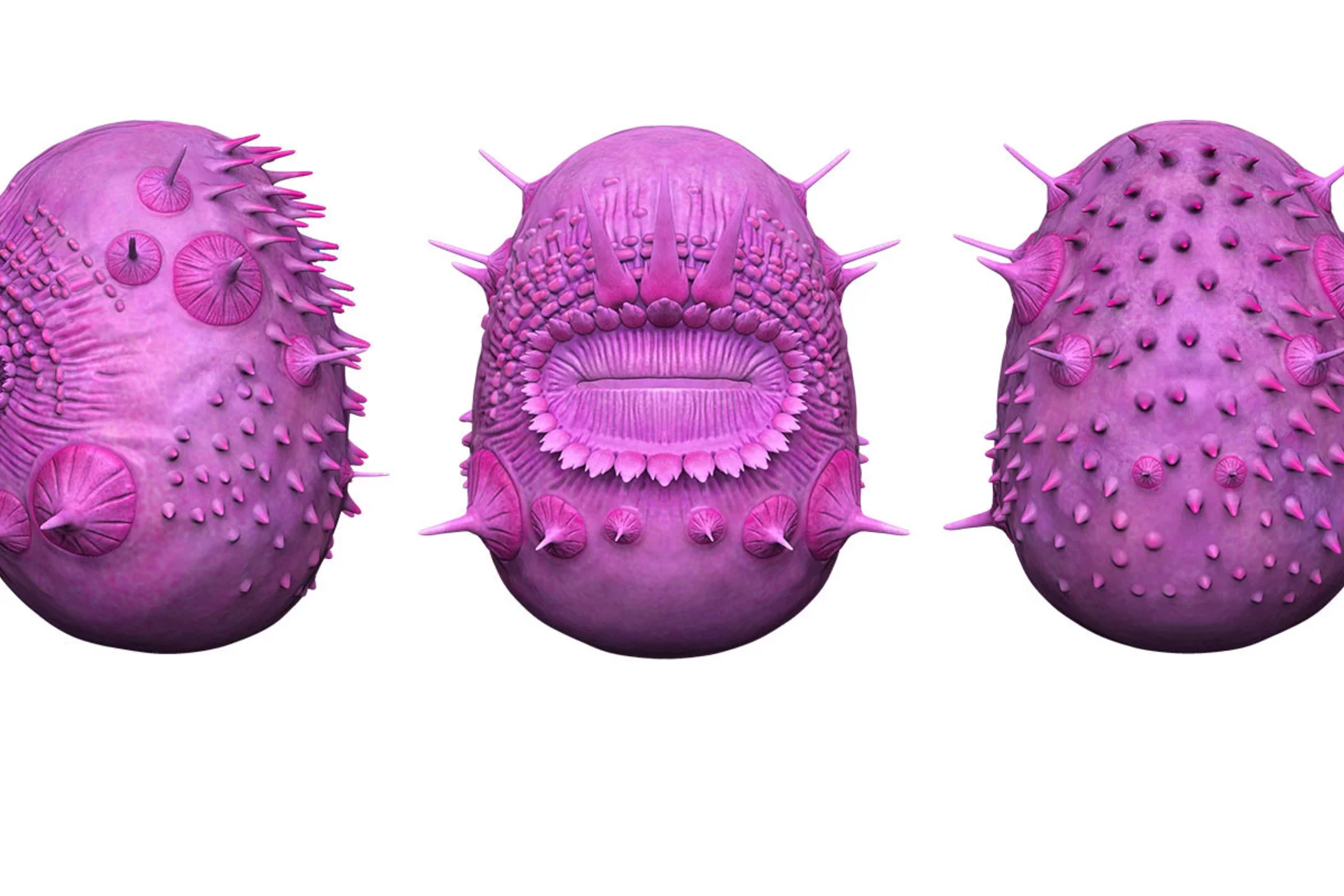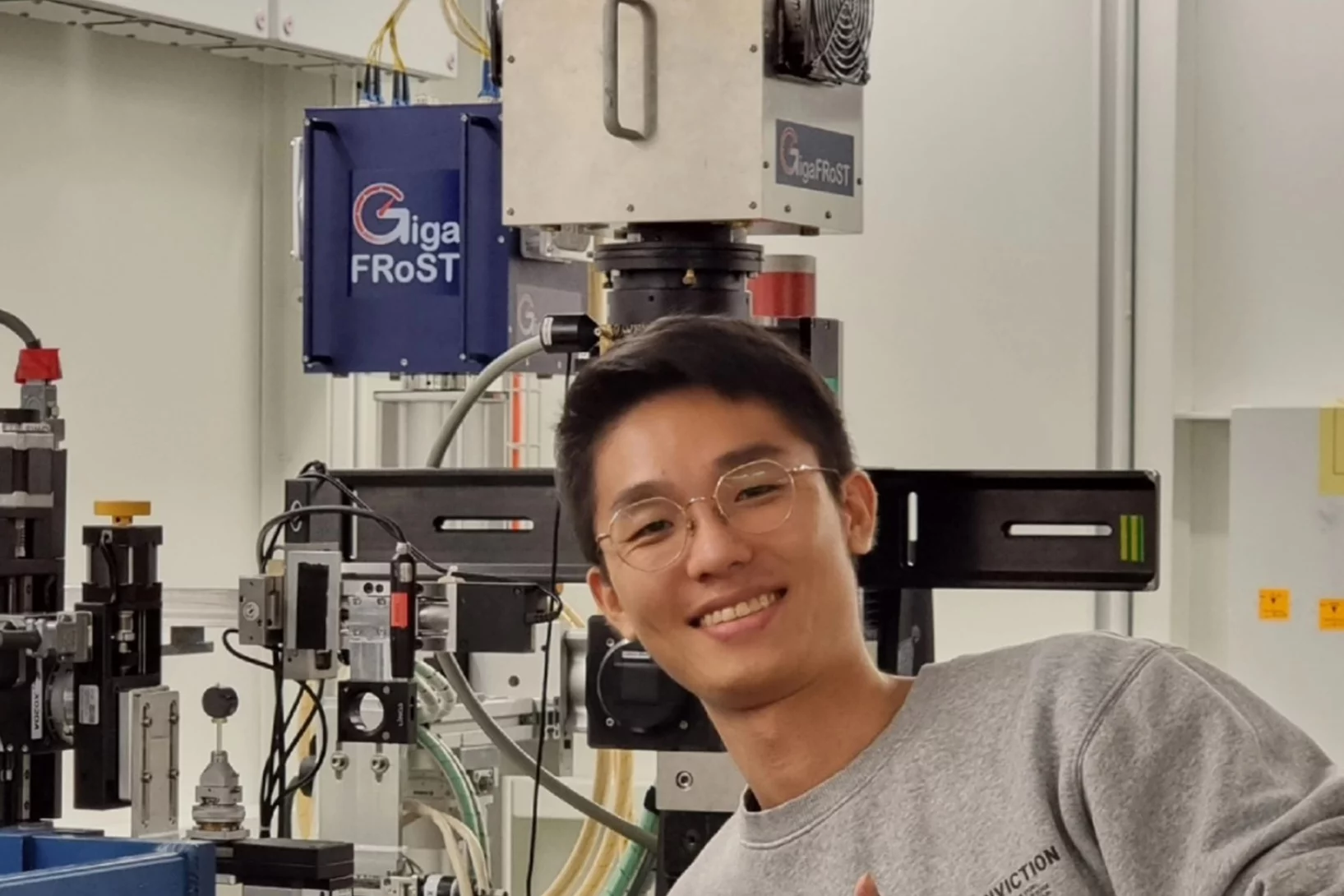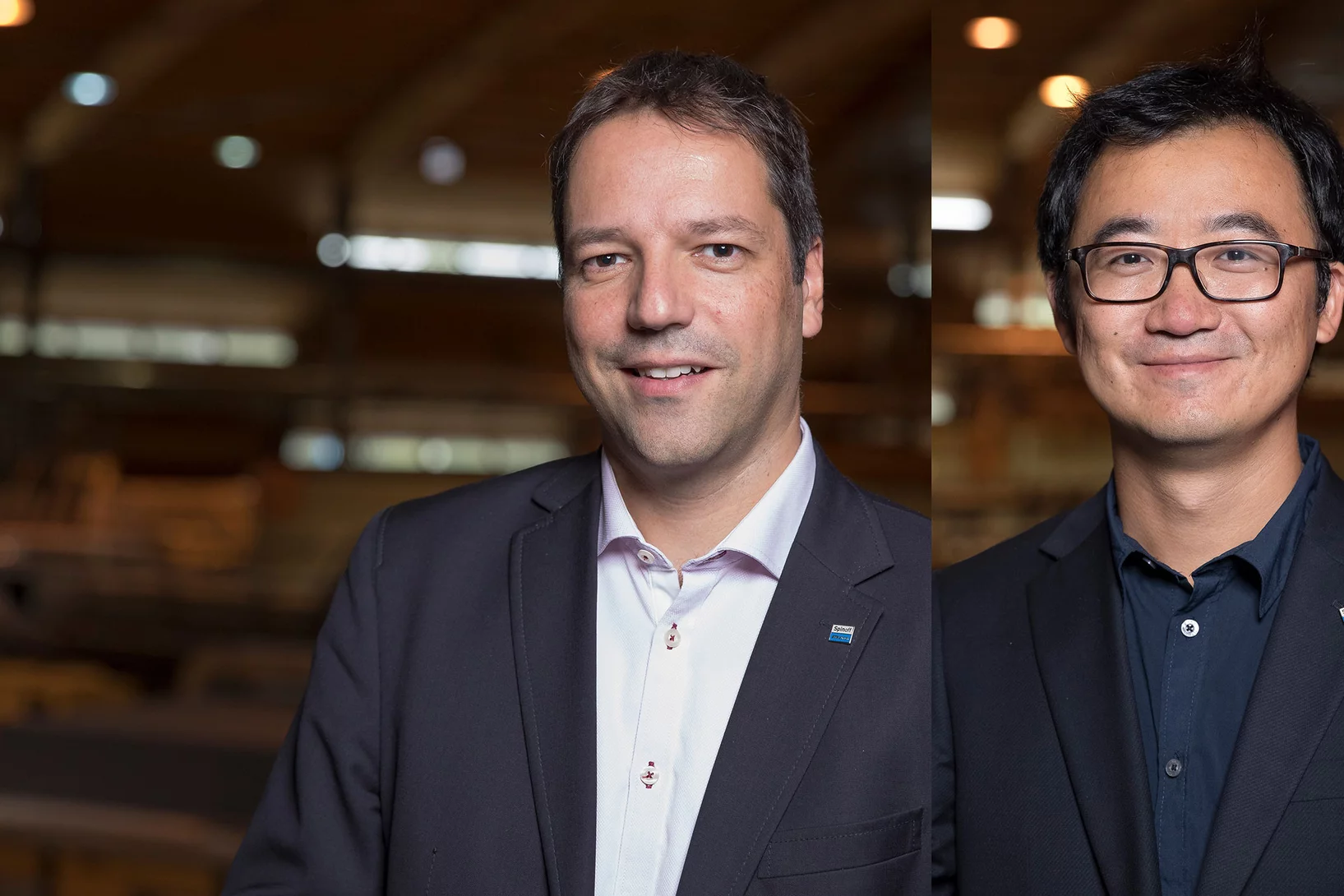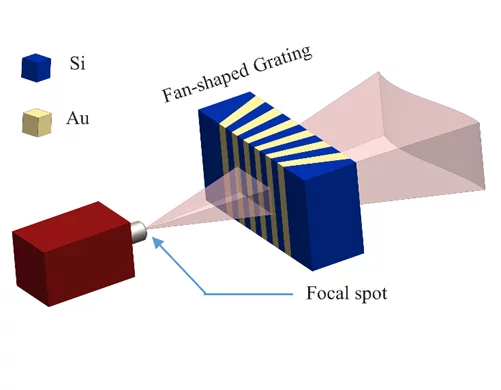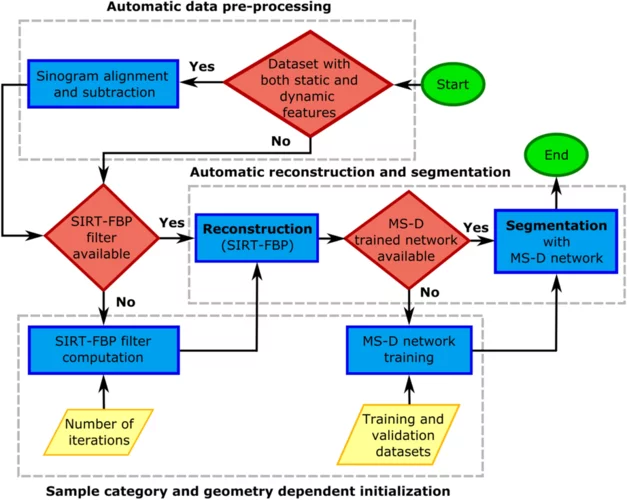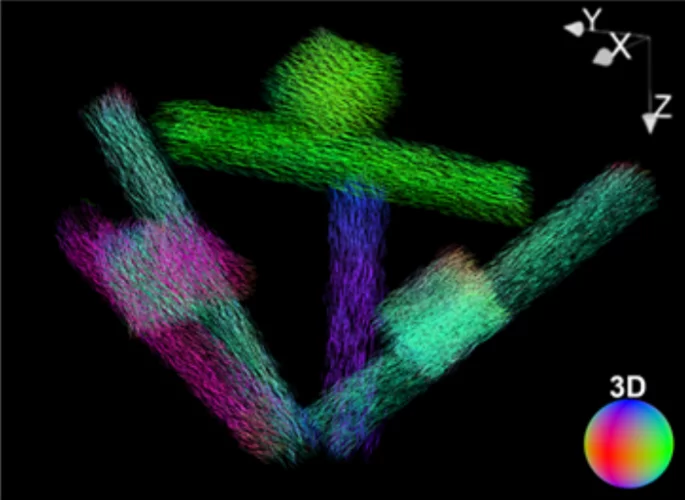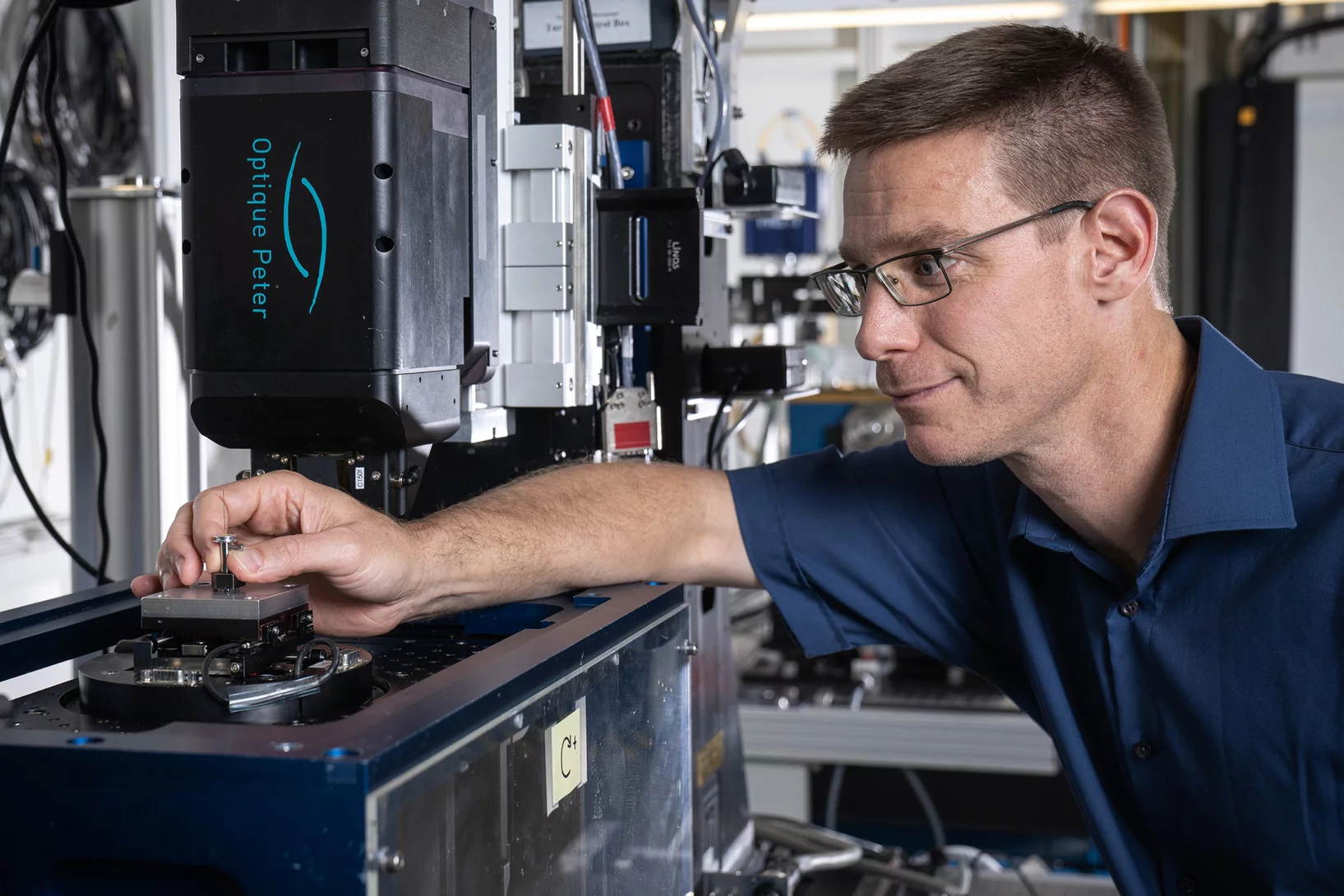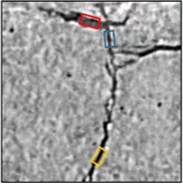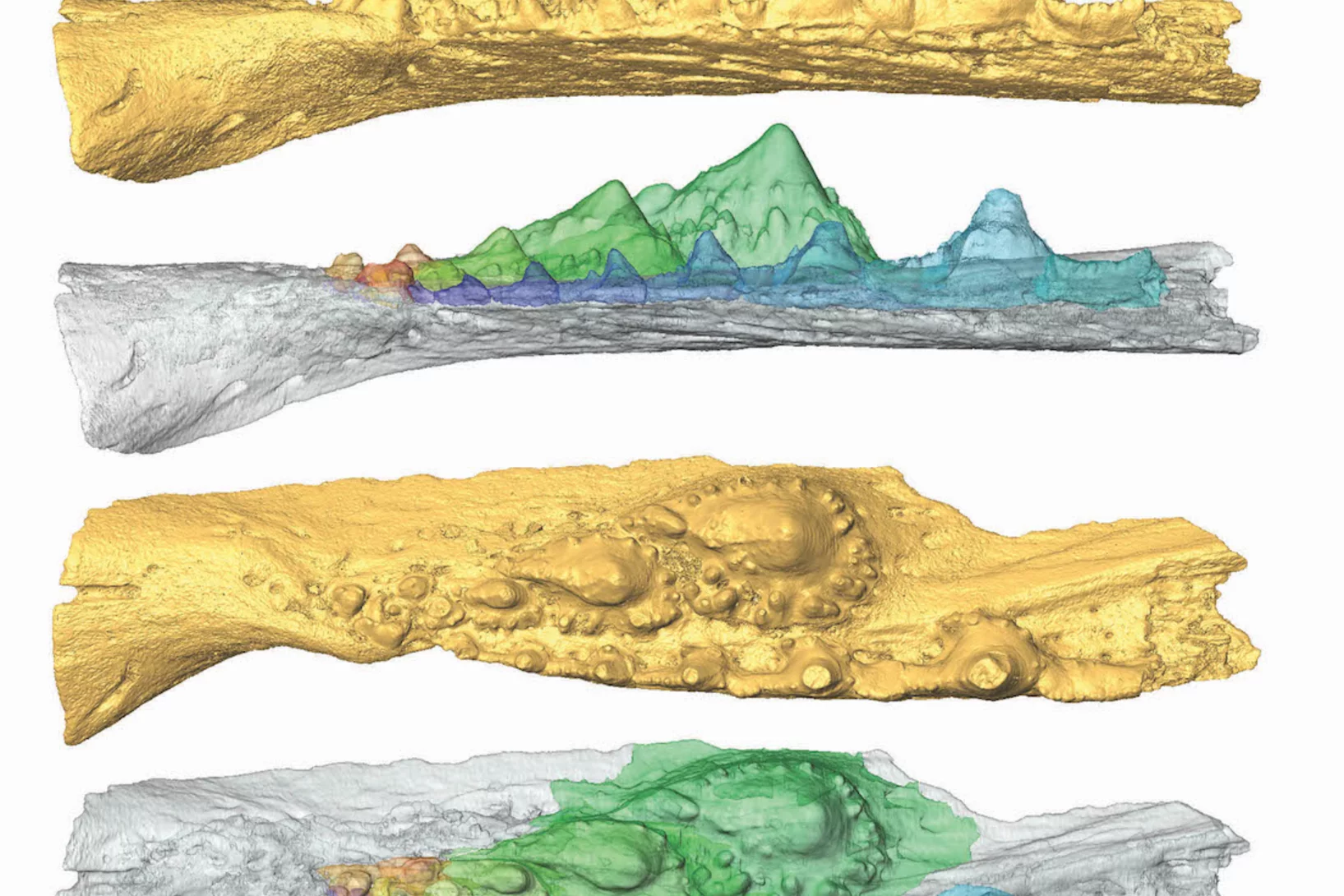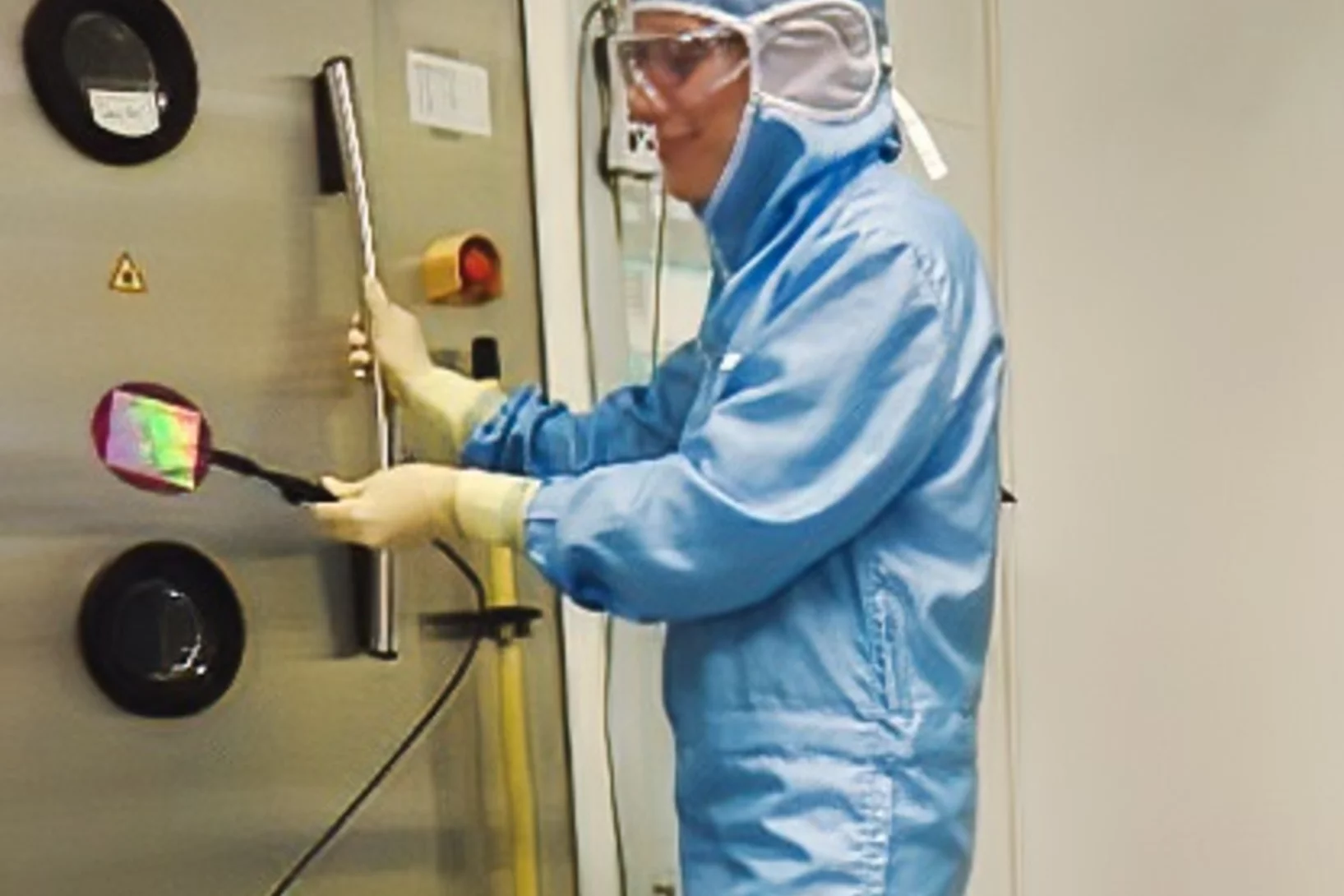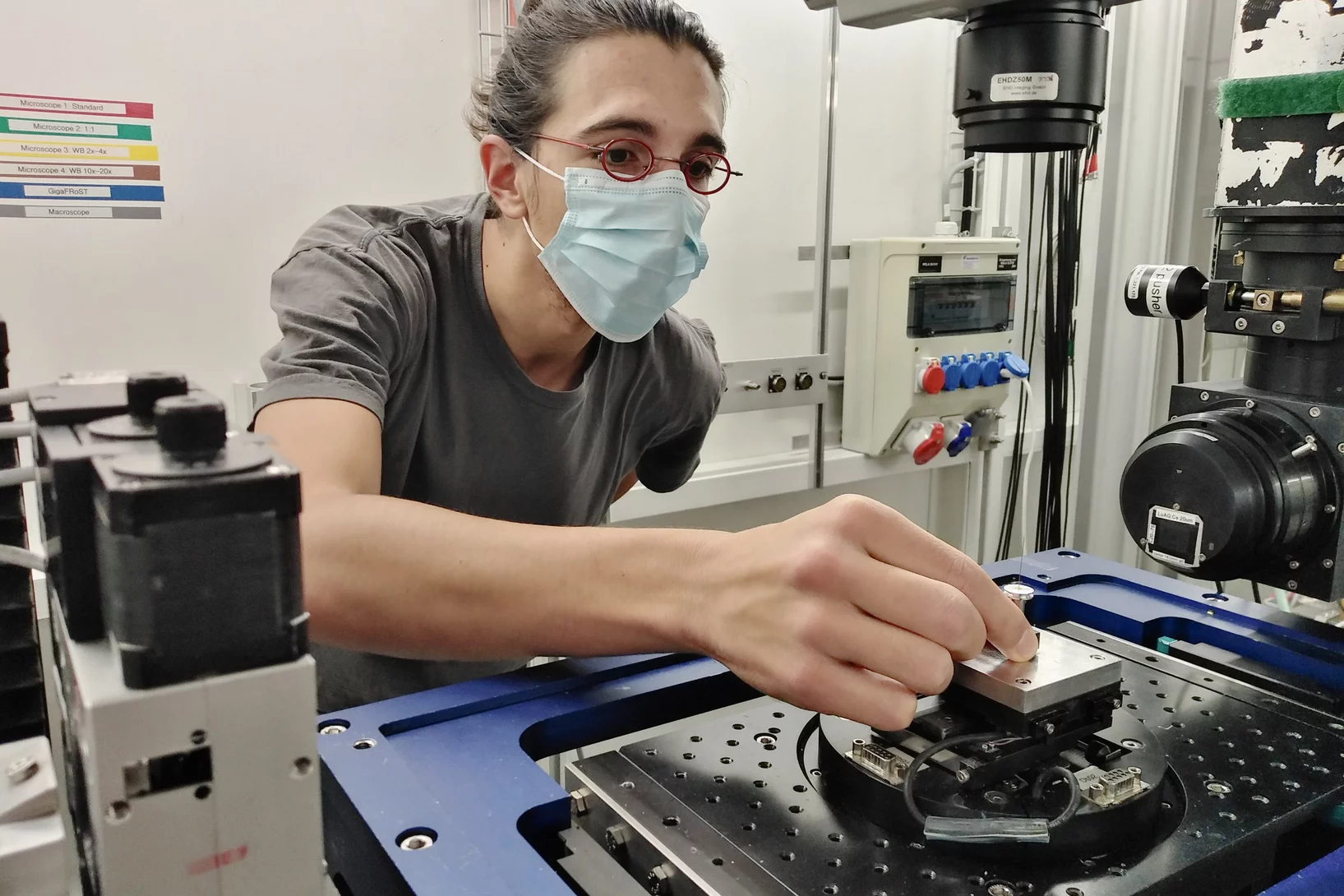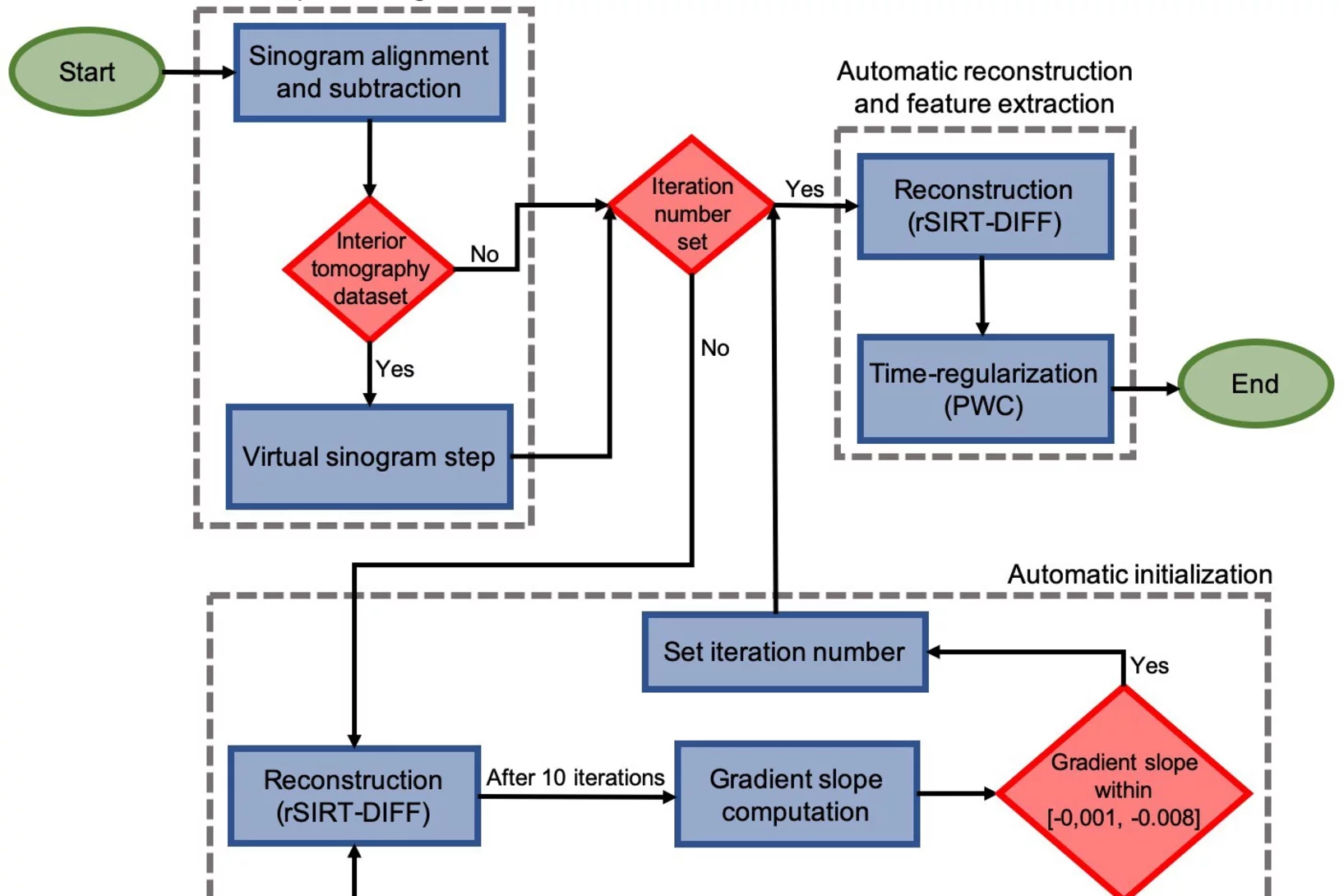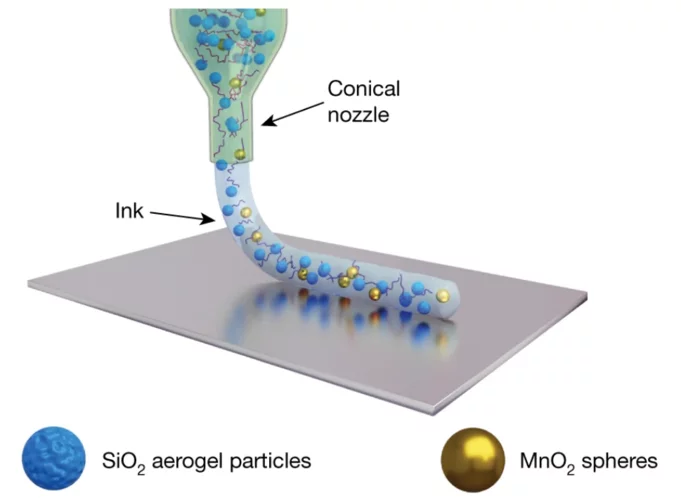Bryan Benz awarded best talk at MNE 2024
Bryan Benz was awarded the conference’s best oral presentation at the 50th International Micro and Nano Engineering Conference (MNE 2024) for his talk entitled “High aspect ratio (1:500) silicon nanowires for force sensing”.
TOMCAT attends XNPIG2024, bags two awards
A TOMCAT delegation attended the 6th International Conference on X-ray and Neutron Phase Imaging with Gratings (XNPIG2024) held on 8-12 April, 2024 in Shenzhen, China. The team delivered a series of two invited talks and seven contributed talks, all of which were well-received by the conference attendees. Two team members were selected for their outstanding contributions: Simon Spindler was awarded one of the Best Poster Prizes for his recent work on “Diffraction Beamlets” while Stefano van Gogh was the co-recipient of the W.H.F. Talbot Award, in recognition of his outstanding PhD thesis.
Ursache für verstopfte Spritzennadeln gefunden
Forschende des PSI und des Technologietransferzentrums ANAXAM finden die Ursache für Verstopfungen bei vorgefüllten Fertigspritzen.
3-D-Einblicke in neuartiges Fertigungsverfahren
Mit 3-D-Druck komplexe Formen herstellen
Brustkrebs früher erkennen
Präzises 3-D-Röntgen kann Brustkrebsvorsorge verbessern.
Röntgenblick nach Herztransplantationen
Synchrotronlicht hilft dabei, nach einer Herztransplantation zu beurteilen, ob und wie stark der Körper das neue Organ abstösst.
X-ray tomography helps understand how the heart beats
Researchers at the Swiss Light Source SLS use X-ray phase contrast imaging to study a heart in action as it beats.
Jisoo Kim receives PSI Thesis Medal 2023
Jisoo Kim receives the PSI Thesis Medal 2023. With this award, PSI recognises outstanding PhD theses, achieving a high degree of innovation and potentially leading to scientific breakthroughs. Jisoo holds a Master of Science from the Korean Advanced Institute of Science &Technology and defended his thesis entitled “Towards time-resolved X-ray scattering tensor tomography” at ETH Zürich.
Seltsames Fossil ist nicht unser Vorfahre
Röntgenlicht löst ein Rätsel der menschlichen Abstammung
Jisoo Kim bags the 2022 Werner Meyer-Ilse Award
Jisoo Kim was awarded the 2022 Werner Meyer-Ilse Memorial Award. The WMI Award is given to young scientists for exceptional contributions to the advancement of X-ray microscopy through either outstanding technical developments or applications, as evidenced by their presentation at the International Conference on X-ray Microscopy and supporting publications. Jisoo was awarded for his development of the method "Time-resolved x-ray scattering tomography for rheological studies", and is co-recipient of the award with Yanqi Luo from the Advanced Photons Source for her work on applications. The award was presented during the 15th International Conference on X-ray Microscopy XRM2022 hosted by the National Synchrotron Radiation Research Center (NSRRC) in Hsinchu, Taiwan on 19 - 24 June, 2022.
Nominiert: Präzises Röntgen von Brustgewebe
Mit hochauflösendem Röntgen dem Brustkrebs auf der Spur – PSI-Forschende sind für den Europäischen Erfinderpreis nominiert.
Broadening the field of view with a fan-shaped source grating
The orientation mismatch between the cone beam of an X-ray tube and the grating lines in a flat substrate remains a big challenge for laboratory grating-based X-ray interferometry, since it severely limits the imaging field of view. To solve this problem, we fabricated fan-shaped G0 source gratings by modulating the electric field during the deep reactive ion etching of silicon. With local electric field modulation in plasma we can etch high aspect ratio fan-shaped gratings that match the X-ray cone beam emission of a tube source. This new technology replaces the grating bending and allows a more compact design with larger field of view. Our work have recently been published in Applied Surface Science.
HERCULES students virtually at TOMCAT
In the framework of the HERCULES European School about Neutrons & Synchrotron Radiation for Science which is coordinated by the Université de Grenoble Alpes and took place on February 28 – April 1, 2022, we were pleased to virtually host 4 students for a hands-on session. During this practical on “Absorption and phase contrast X-ray tomographic microscopy”, the students had the chance to go, with the help of a jupyter notebook and the guidance of our team members Margaux Schmeltz and Christian Schlepütz, through different examples of tomographic reconstructions. They learnt about basic decisions and tradeoffs that have to be taken into account when planning to acquire tomographic imaging data, were introduced to some segmentation tools and even got to play with dynamic tomographic data!
Macroscopic mapping of microscale fibers in freeform injection molded fiber-reinforced composites using X-ray scattering tensor tomography
Prediction of the mechanical properties dictated by the local microfiber orientation is essential for the performance characterization of fiber-reinforced composites. Typically, tomographic imaging methods that provide fine spatial resolution are employed to investigate various materials' local micro- and nano-architecture in a non-destructive manner. However, conventional imaging techniques are limited by a substantial trade-off between the structure size of interest and the accessible field of view (FOV). Researchers from the TOMCAT beamline at Paul Scherrer Institut, Xnovo Technology ApS, and the Technical University of Denmark have demonstrated the potential of X-ray scattering tensor tomography for industrial applications by characterizing the microstructure of a centimeter-sized industrially relevant freeform injection molding fiber-reinforced composite sample. This emerging technique provides unprecedented access to microstructural information over centimeter-sized sample volumes paving the way towards its potential integration as an invaluable tool, for instance, in the fiber-reinforced-composite (FRC) industry. The obtained fiber orientation and anisotropy information over statistically relevant large volumes can be used to predict the mechanical properties of final products, optimize production parameters, and improve fiber injection molding simulation frameworks. The work is published in Composites Part B: Engineering on 15 March 2022.
Marie-Christine Zdora joins the X-ray Tomography Group
The X-ray Tomography group welcomes Marie-Christine Zdora as a new member. In her role as translational X-ray imaging adjunct scientist, Marie will mainly work on phase-contrast and dark-field imaging focusing on the further development of these techniques towards their clinical translation. Before joining TOMCAT, Marie was a postdoc in the X-ray optics and applications group at the Laboratory for Micro- and Nanotechnology (LMN) at PSI, where she worked on the development of new X-ray optics as well as X-ray wavefront sensing. Prior to this position, she was a research fellow at the University of Southampton in the UK, where she made advances in X-ray speckle-based imaging using synchrotron and lab sources.
Deep learning based classification of dynamic processes in time-resolved X-ray tomographic microscopy
Time-resolved X-ray tomographic microscopy provides new opportunities in the volumetric investigation of dynamic processes. Full exploitation of these new capabilities is currently still hindered by the lack of efficient post-processing approaches capable of handling TBs of noisy datasets. A deep learning based reconstruction and classification algorithm designed to reconstruct and segment dynamic processes within a static matrix with high efficiency is a solution to this issue. In a paper published recently in Scientific Reports, we demonstrate the advantages of the proposed approach on dynamic, time-resolved fuel cell data, for which the current data post-processing pipeline heavily relies on manual labor, typically limiting the experimental plans to just a small range of the full parameter space.
Fast acquisition protocol for X-ray scattering tensor tomography
X-ray scattering tensor tomography facilitates the investigation of the microstructural organization in statistically large sample volumes. Established acquisition protocols based on scanning small-angle X-ray scattering and X-ray grating interferometry inherently require long scan times even with high brilliance X-ray sources. Recent developments in X-ray circular diffractive optics enable fast single-shot acquisition of the sample scattering properties with 2D omnidirectional sensitivity. Researchers from the TOMCAT beamline at Paul Scherrer Institut have proposed simple yet inherently rapid acquisition protocols for X-ray scattering tensor tomography leveraging these new optical elements. Results from both simulation and experimental data, supported by a null space analysis, suggest that the proposed acquisition protocols are rapid and corroborate, providing sufficient information for the accurate volumetric reconstruction of the scattering properties. The proposed acquisition protocols will be the cornerstones for rapid inspection or time-resolved tensor tomography of the microstructural organization over an extended field of view. The work is published in Scientific Reports on 29 November 2021.
Röntgenmikroskopie mit 1000 Tomogrammen pro Sekunde
An der Synchrotron Lichtquelle Schweiz SLS haben Forschende einen neuen Rekord in einer Bildgebungsmethode namens Tomoskopie aufgestellt.
EXCITE Summer School at TOMCAT
In the framework of the 15th EXCITE Summer School in Biomedical Imaging which took place in Zürich on 6-17 September 2021, we were pleased to host 8 students at the beamline for a hands-on session. During this practical on “Synchrotron based X-ray tomographic microscopy”, the students had the chance to see and learn about the beamline infrastructure, scan a few test samples, reconstruct the tomographic volumes and discuss different aspects of tomographic microscopy at a synchrotron.
The X-ray optics design and fabrication team has a new member
The X-ray Tomography group welcomes Craig Lawley as Postdoc in the X-ray optics design and fabrication team. He will contribute to developing the microfabrication process of hard X-ray gratings in silicon substrates suitable for preclinical testing with pitch size in the micrometer range and aspect ratio higher than 100.
Hierarchical imaging and computational analysis of three-dimensional vascular network architecture in mouse brain
An international team involving researchers from the University and University Hospital Zürich, the Krembil Research Institute and the University and University Hospital in Toronto (Canada), the Department of Physics of Jyväskylä (Finland), the University of Leuven (Belgium), the Johannes Kepler University in Linz (Austria), the Novartis Institutes for Biomedical Research in Emeryville (USA), the ETH Zürich and the Paul Scherrer Institute has developed a protocol that enables hierarchical imaging and computational analysis of vascular networks in entire postnatal- and adult mouse brains, enabling direct and quantitative comparisons of the morphological brain vascular network architecture between different postnatal and / or adult developmental stages. The results have been published on Nature Protocols on September 3rd, 2021.
TOMCAT welcomes on board two scientists
The X-ray Tomography group welcomes on board Mariana Verezhak and Goran Lovric as members of the TOMCAT beamline crew. They will both contribute to the further development and realization of TOMCAT 2.0 (S- and I-TOMCAT branches on SLS2.0).
Understanding Why Solid-State Batteries Fail
Researchers from the University of Oxford, the Diamond Light Source and the Paul Scherrer Institut have generated strong evidence supporting one of two competing theories regarding the mechanism by which lithium metal dendrites grow through ceramic electrolytes. A process leading to short circuit at high rates of charge. The X-ray phase-contrast imaging capabilities of the TOMCAT beamline of the Swiss light source allowed researchers to visualize and characterize the growth of cracks and dendrites deep within an operating solid-state battery. The results were published in Nature Materials on April 22, 2021.
Deep evolutionary origins of the human smile
Detailed characterization of the tooth and jaw structure and development among shark ancestors by synchrotron based X-ray tomographic microscopy at TOMCAT led an international team of researchers from the Naturalis Biodiversity Center in Leiden and the University of Bristol to the discovery that while teeth evolved once, complex dentitions have been gained and lost many times in evolutionary history.
Women in Engineering Materials highlights Dr. Lucia Romano's work
The paper "High aspect ratio grating microfabrication by Pt assisted chemical etching and Au electroplating” by Dr. Lucia Romano & coauthors has been highlighted in the "Women in Engineering Materials" Virtual Issue published on Advanced Engineering Materials. This Virtual Issue draws attention to outstanding works within Materials Science created under the lead of women as principal investigators.
Congratulations to Lucia and the x-ray optics design and fabrication team!
SLS 2.0 approved - TOMCAT 2.0 cleared for takeoff!
In December 2020 the Swiss parliament approved the Swiss Dispatch on Promotion of Education, Research and Innovation (ERI) for 2021 to 2024 which includes funding for the planned SLS 2.0 upgrade. The new machine will lead to significantly increased brightness, thus providing a firm basis for keeping the SLS and its beamlines state-of-the-art for the decades to come. The TOMCAT crew is very excited that the TOMCAT 2.0 plans (deployment of the S- and I-TOMCAT branches, see SLS 2.0 CDR, p. 353ff) have been included in the Phase-I beamline upgrade portfolio. These beamlines will receive first light right after the commissioning of the SLS 2.0 machine around mid 2025. A first milestone towards this goal has just been achieved, with the successful installation of the S-TOMCAT optics hutch during W1 of 2021. The TOMCAT scientific and technical staff would like to thank Mr. Nolte and his Innospec crew for delivering perfectly on schedule.
BEATS beamline scientist from SESAME synchrotron trains at TOMCAT
TOMCAT welcomes Gianluca Iori, beamline scientist from BEATS - the new beamline for tomography at the SESAME synchrotron in Jordan, to a 3-month training on beamline operations. Gianluca’s visit is part of the Staff Training (BEATS Work Package 2) organized for BEATS scientific staff and SESAME control engineers. BEATS is a European project, funded under the EU’s Horizon 2020 research and innovation programme and coordinated by the ESRF.
3 Post Docs and 1 PhD student join TOMCAT
The X-ray Tomography group welcomes Stefan Gstöhl (Post-Doc), Maxim Polikarpov (Post-Doc), Margaux Schmeltz (Post-Doc) and Aleksandra Ivanovic (PhD Student) as new members. The group also thank everybody who helped making it possible for our Post-Docs and PhD student to join PSI amidst the challenges brought by the COVID-19 pandemic.
Automatic extraction of dynamic features from sub-second tomographic microscopy data
A fully automatized iterative reconstruction pipeline designed to reconstruct and segment dynamic processes within a static matrix has been developed at TOMCAT. The algorithm performance is demonstrated on dynamic fuel cell data where it enabled automatic extraction of liquid water dynamics from sub-second tomographic microscopy data. The work is published in Scientific Reports on 2 October 2020.
3D printing silica aerogels at the micrometer scale
A group of EMPA and ETH Zürich researchers have developed a new method to directly write ink made of silica aerogels in 3D. Thanks to X-ray phase contrast tomography at the TOMCAT beamline they characterized the resulting printed material with different compositions. Their results were published in Nature on August 18, 2020.
